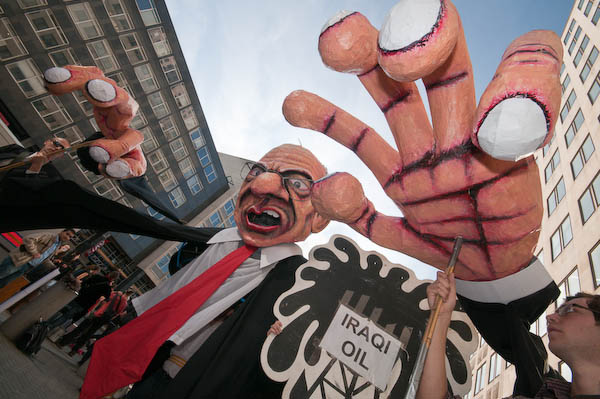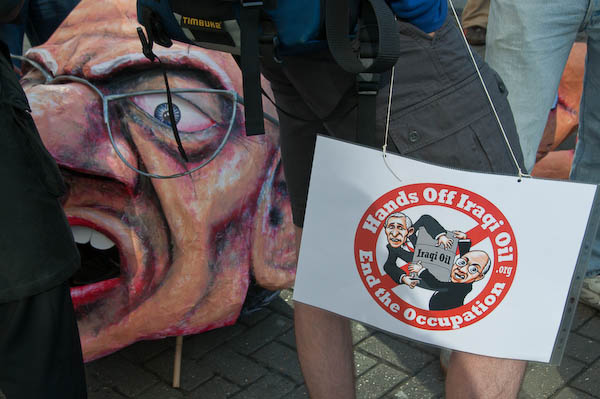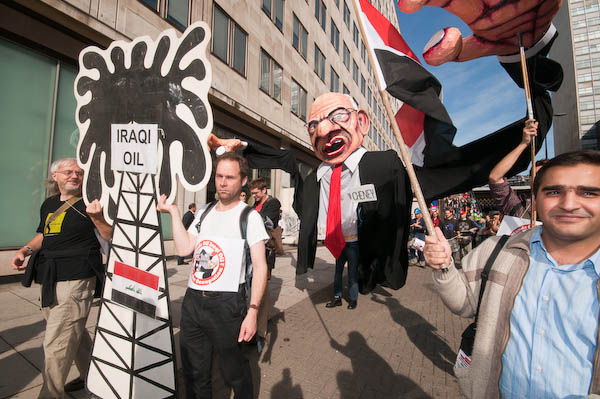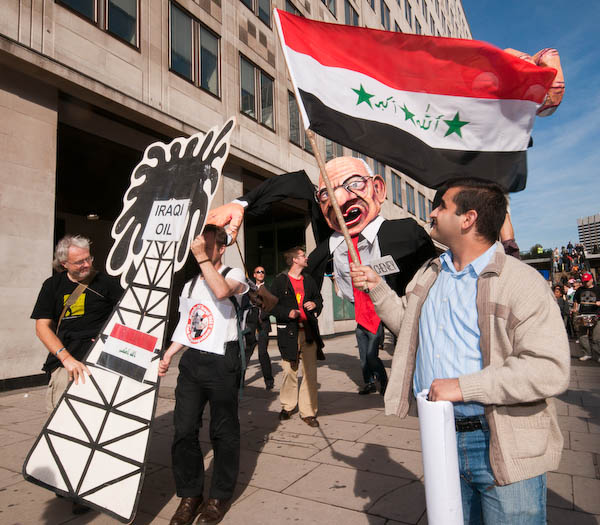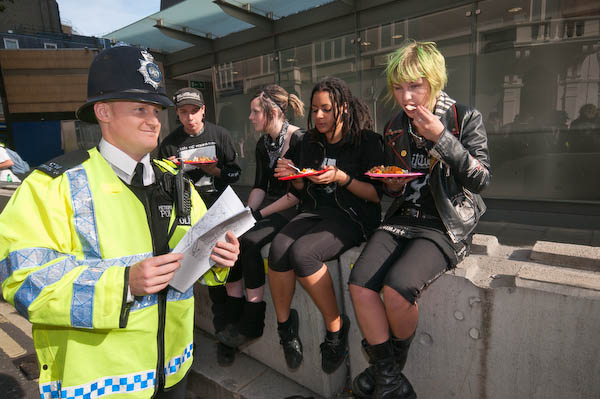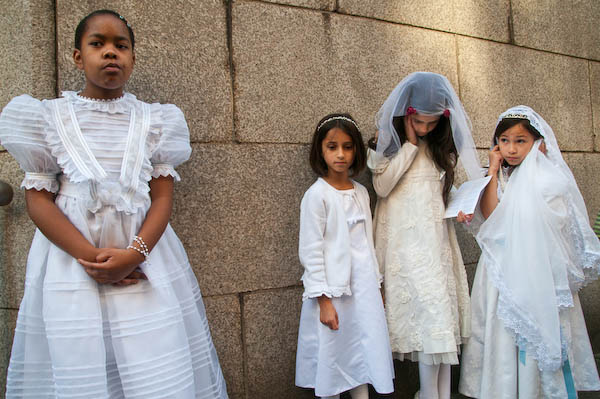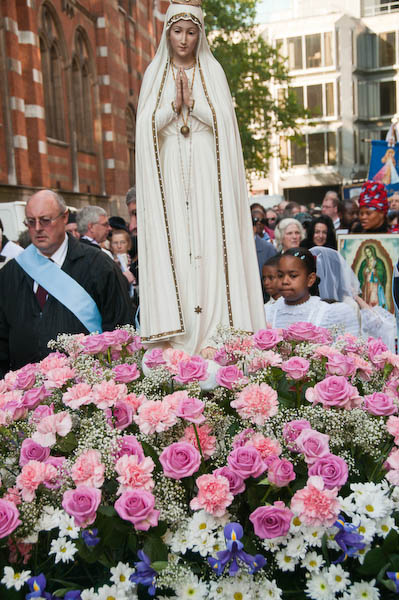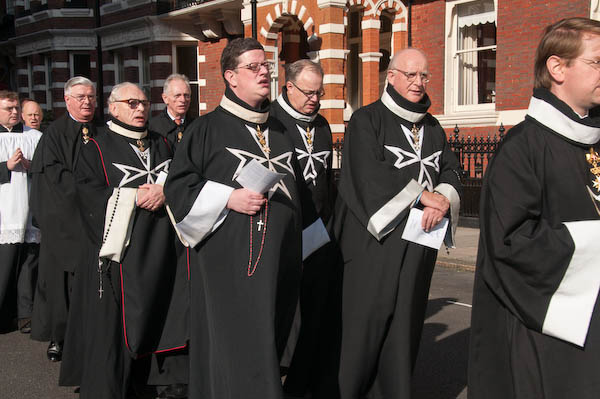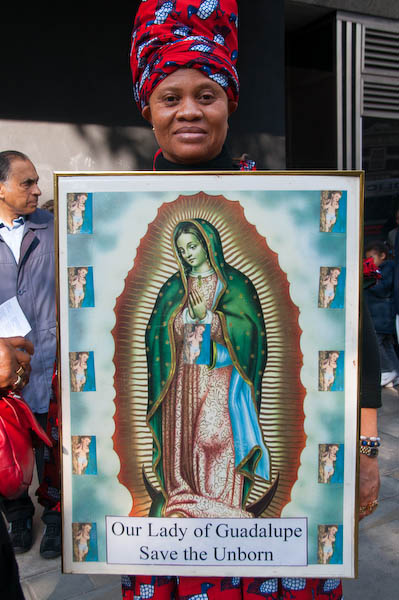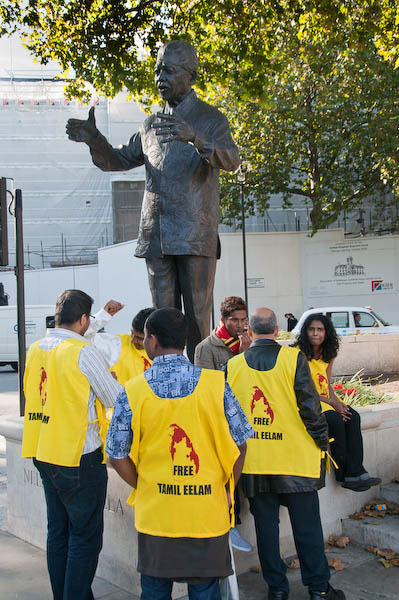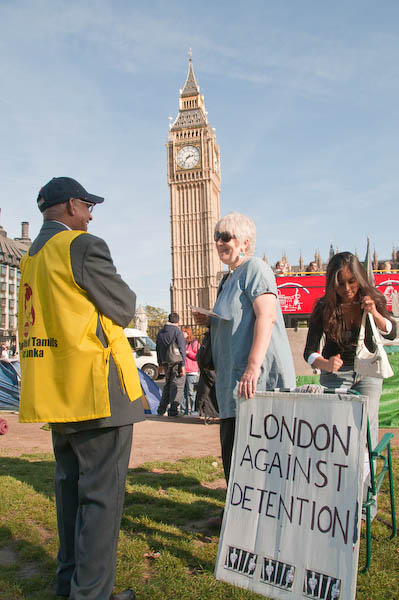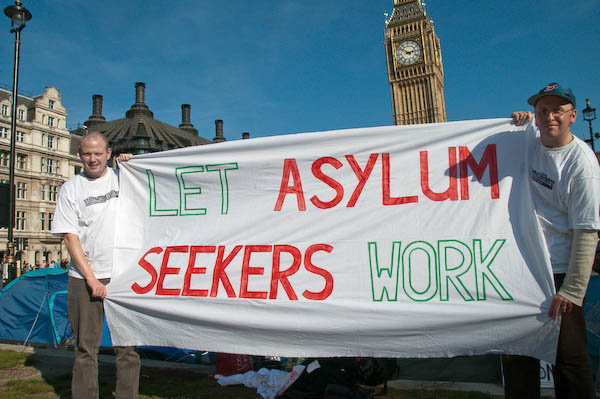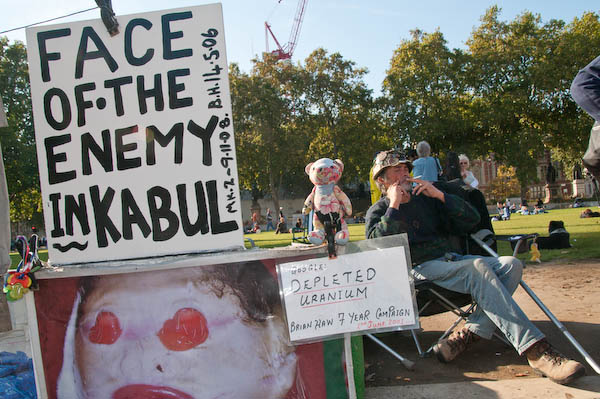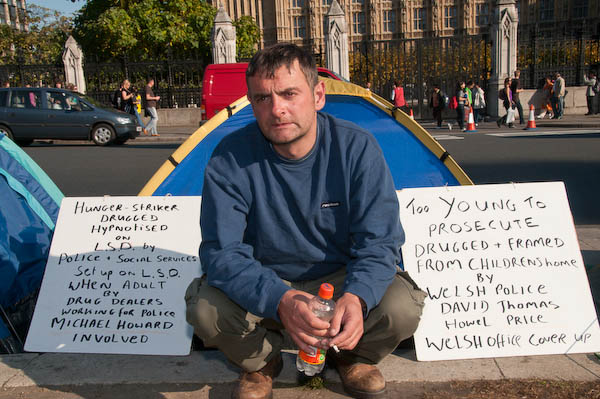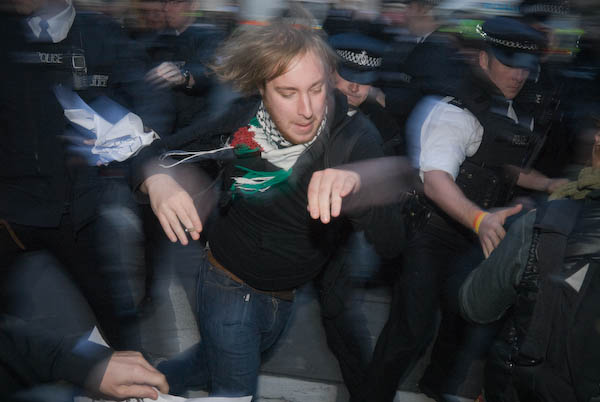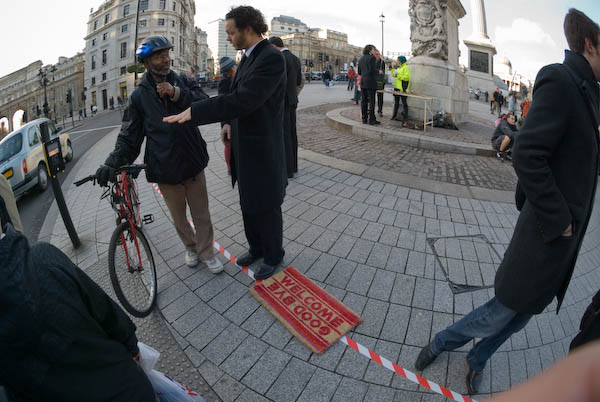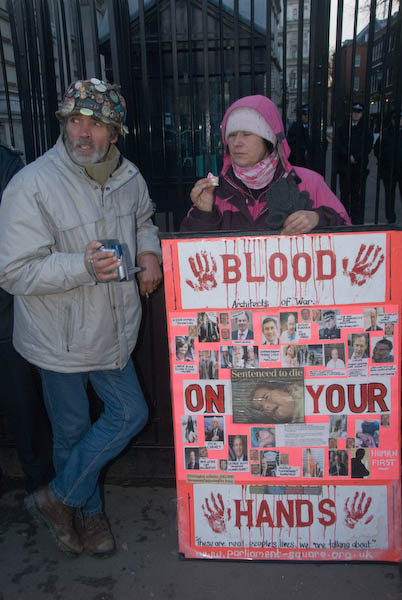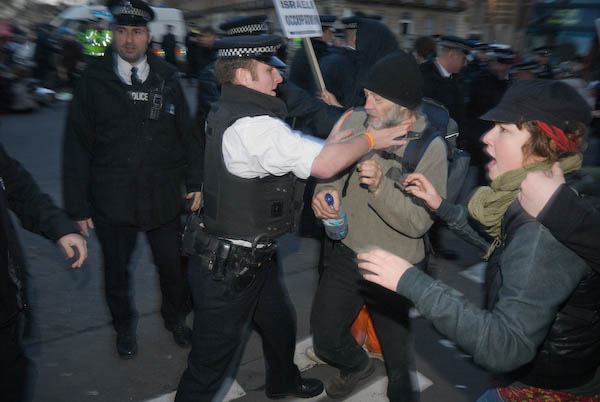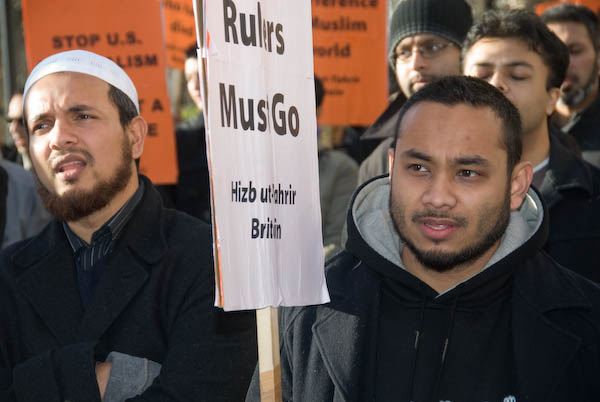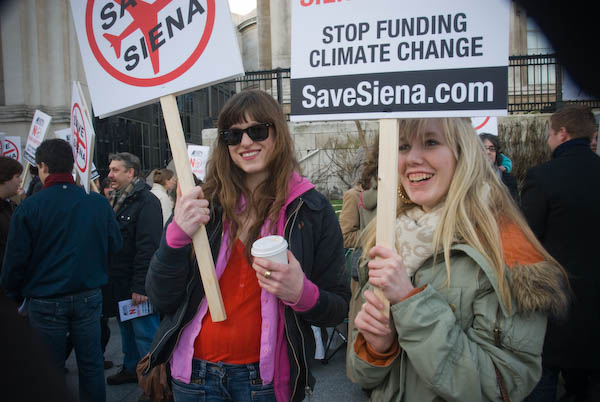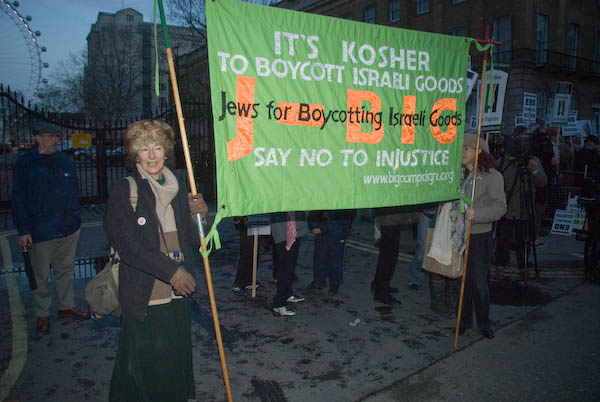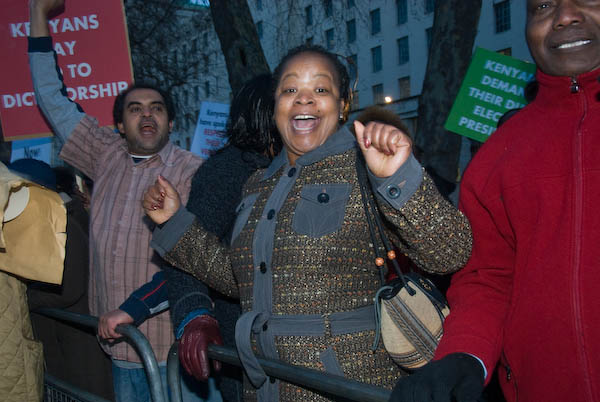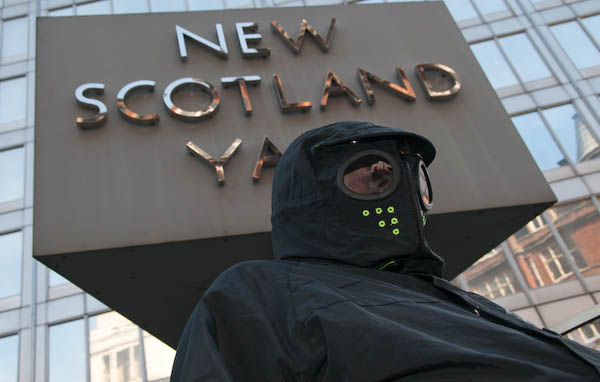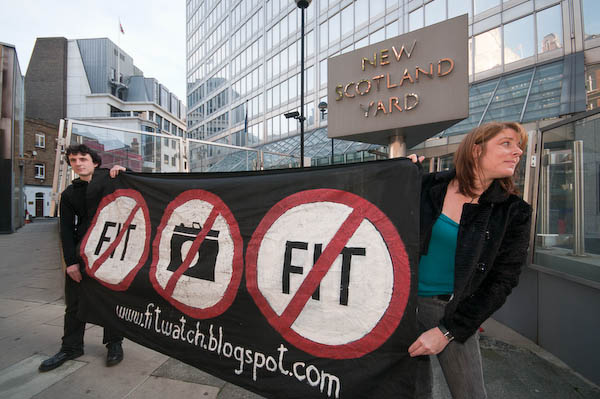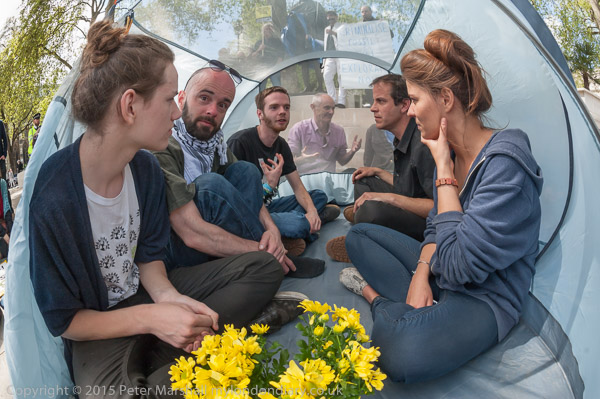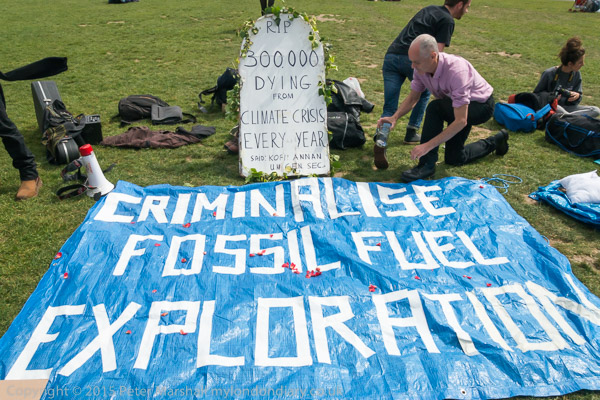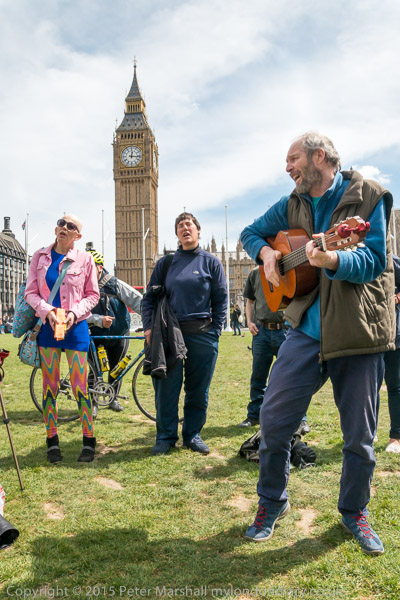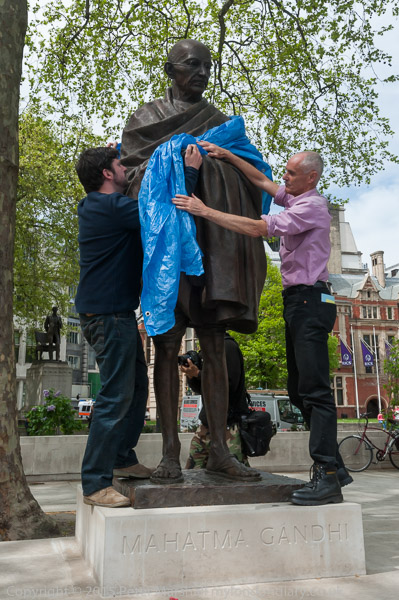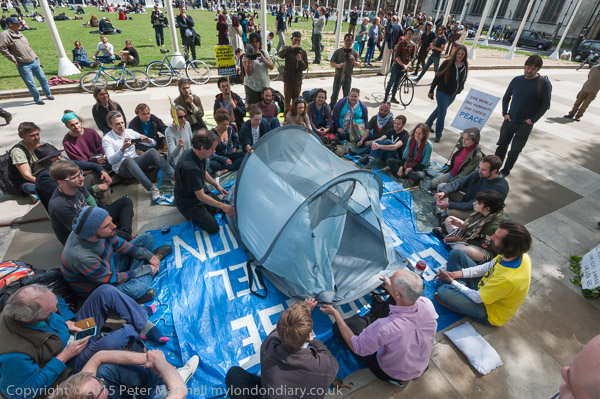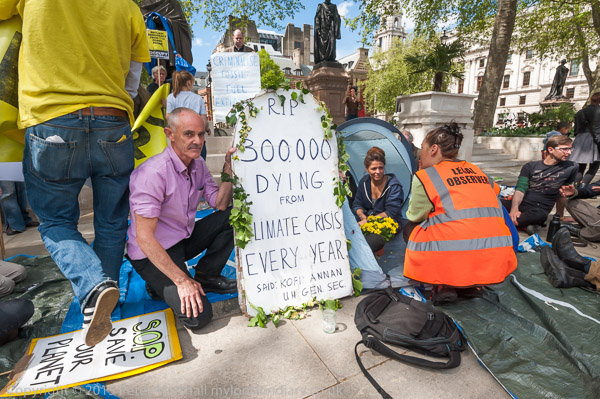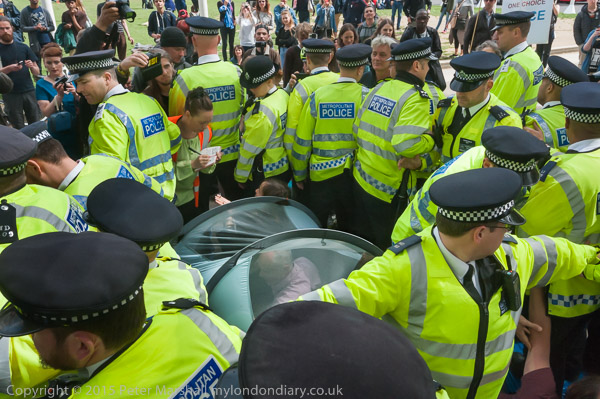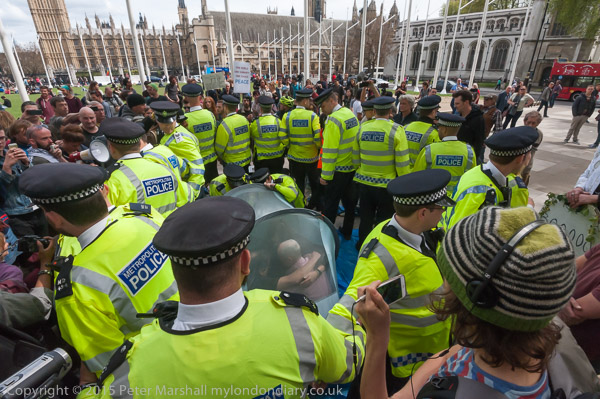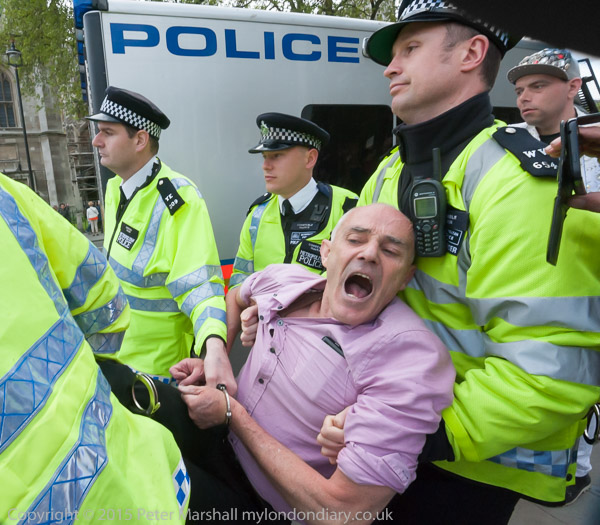Carnaval, Protest For Protest & A Tea Party: On Sunday 7th August, 2005 my working day began with a Latin carnival and ended with a not quite Boston tea party. Sandwiched between the two was a very varied protest against new laws passed by the New Labour government to restrict the right to protest under the Serious Organised Crime and Police Act 2005.
Carnaval del Pueblo – Southwark
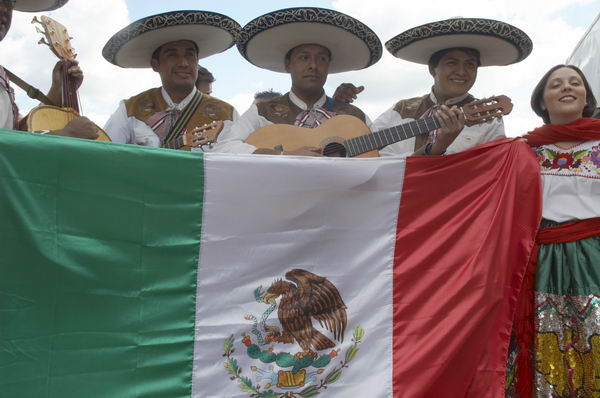
The Carnaval Del Pueblo procession by London’s Latin American communities was this year starting from Potters Fields, an empty cleared site between the GLA headquarters then in More London and Tower Bridge. I photographed a number of those taking part in their varied costumes but found it hard to get more interesting pictures as the groups were more spread out.
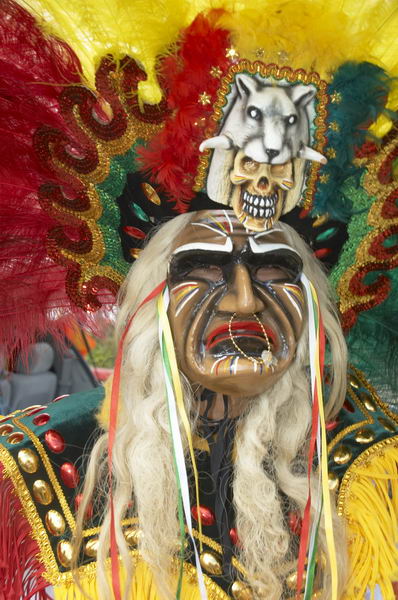
The pictures, thanks to the various different traditions across South and Central America are very colourful but it was impossible for me to identify the different countries and groups they represented. Most of these countries became colonies of Spain and Portugal and influences from there blended with more traditional indigenous costumes and practices.
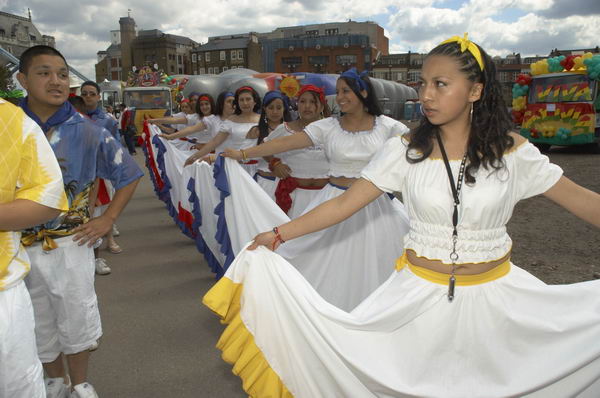
Spain was of course traditionally a major enemy of Britain, and this country supported many of the movements to gain independence from Spain in the 19th century as a number of memorials across London testify. Though much of that support was more aimed at getting some of the riches of the continent than freeing the people and was for middle-class movements by people of largely European orgin rather than for the indigenous people – and remains so in UK foreign policy today.
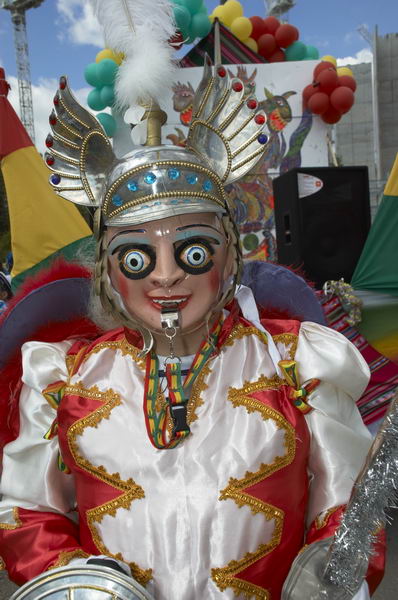
Eventually the procession moved off, on its way to a Latin American Festival in Burgess Park, but I had to leave them as they passed London Bridge station to catch the Jubilee line to Westminster.
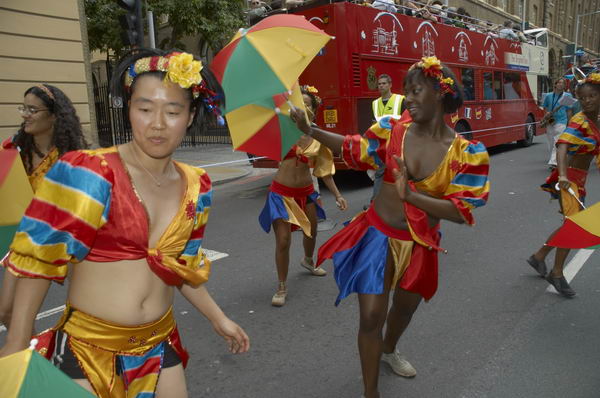
It’s hard to choose just a few pictures from so many – so please click on the link to the August page of My London Diary and scroll down to see more.
The Right to Protest – Parliament Square, Westminster
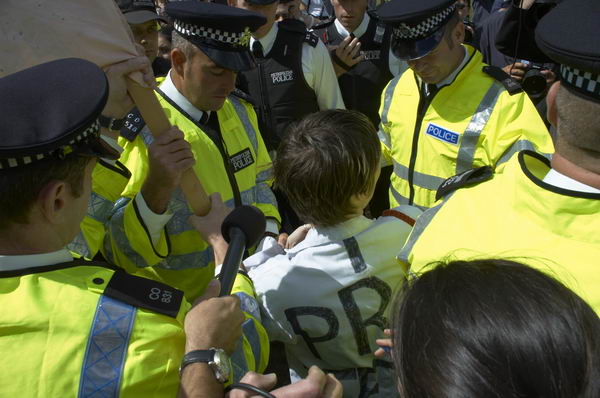
Under New Labour a number of restrictions were introduced which curtailed free speech and the rights of citizens, including a number of measures that they had opposed before they came to power. Some were just been a part of the general trend to central control begun under Thatcher, but others were brought on by the threat of terrorism and even more by the growth of opposition to some government policies, in particular the huge opposition to the invasion of Iran.

This protest followed the passage of the Serious Organised Crime and Police Act 2005 which prohibited “unauthorised demonstrations within a one kilometre radius of Parliament Square” and was one of several in early August 2005 in which protesters were arrested.
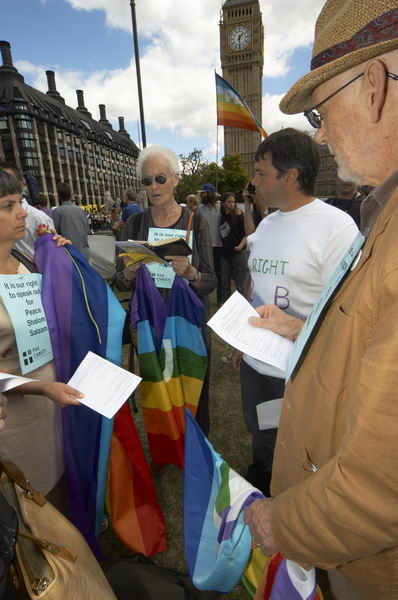
Most people believe that this law had been brought in largely to end the ongoing protest by Brian Haw who had the been protesting in Parliament Square since 2nd June 2001, and whose presence embarrassed Tony Blair and other government ministers. Careless drafting meant the law did not apply to him, though on appeal the court decided it had been meant to and that was good enough, but by then Haw had got permission for a smaller area of protest on the pavement. Despite continuing and often illegal harassment by police and others the protest continued even after Haw died in 2011, continued by Barbara Tucker until May 2013.
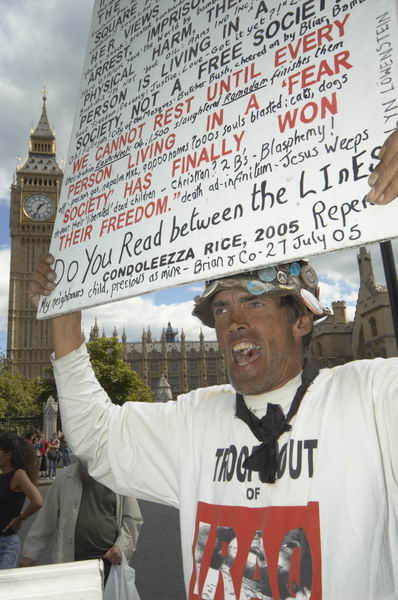
At the protezt Brian held up a large poster with a quotation from a speech by US Secretary of State Condoleeza Rice in January 2005, when she said “If a person cannot walk into the middle of the town square and express his or her views without fear of arrest, imprisonment, or physical harm, then that person is living in a fear society, not a free society. We cannot rest until every person living in a ”fear society” has finally won their freedom.“
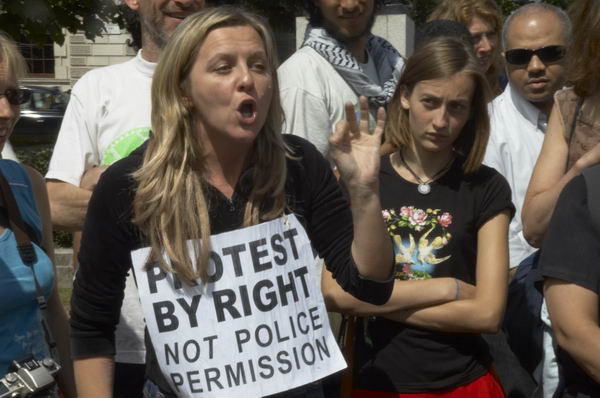
The protests in Parliament Square while I was there took various forms. People held up posters, placards and banners; Pax Christi held a service; clowns clowned – all were warned by police they were committing an offence – and five or six were arrested, rather at random from the hundreds present, probably because they argued with police. I got warned for just being there, despite showing the officer my UK Press Card.
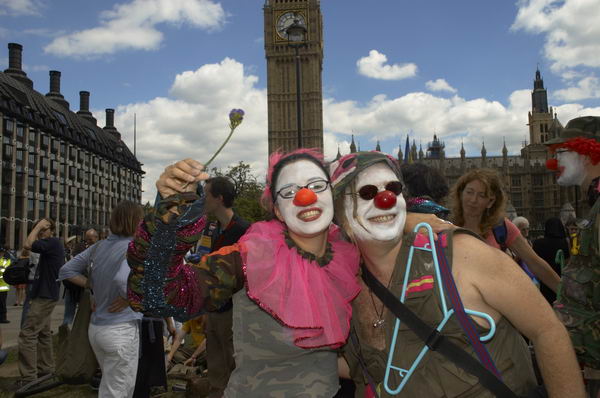
Eventually there was some discussion among those taking part and people agreed they would lie down for a short protest together on the grass in Parliament Square.
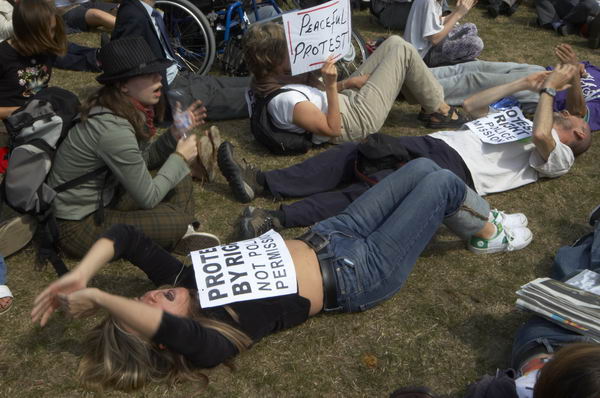
More pictures on the the link on the August page of My London Diary
The Westminster Tea Party – Time for Tobin Tax, Westminster Bridge
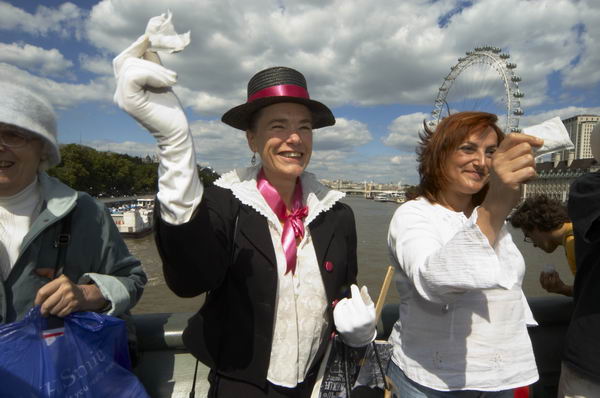
At the end of the Parliament Square protest everyone had been invited to join another short protest about to take place on Westminster Bridge. People gathered there and held tea bags, used here as a political statement against corporate power and in favour of elected governments calling for the introduction of a ‘Tobin Tax’.
Nobel Prize economist James Tobin had in 1972 proposed a small tax on currency transactions to cushion exchange rate volatility by ending speculation, increasingly now carried out by ‘high frequency’ computer algorithms and now relying in AI. It was a development of earlier ideas proposed in the 1930s by John Maynard Keynes.
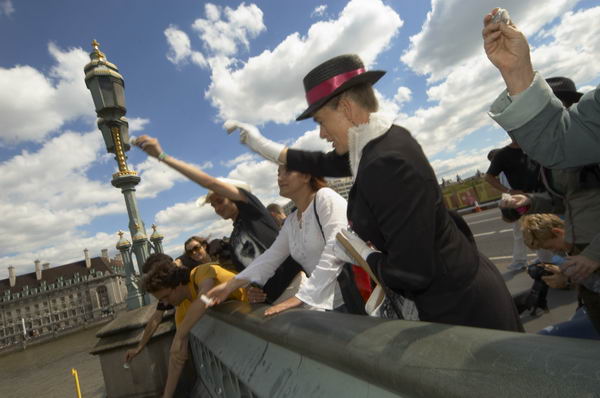
The idea of a Tobin Tax was taken up by global justice organisations at the start of this century as a way to finance projects to aid the global South such as the Millennium Development goals. In part this came from the Fair Trade movement which gives growers and other producers a fair return for their work. One of its most successful areas has been in promoting fairly traded tea. Once only available from specialist agencies such as the sadly now defunct Traidcraft this is now stocked on many supermarket shelves – as too are Fair Trade certified coffee and chocolate.
More pictures on the the link on the August page of My London Diary
